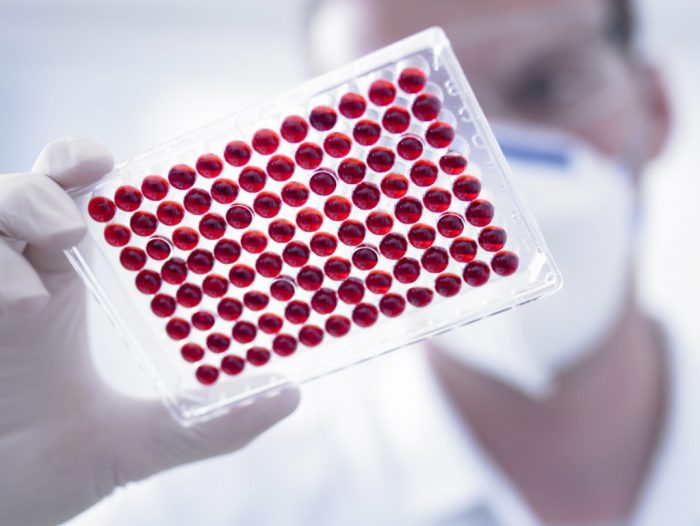Brain atrophy refers to a loss of brain cells or a loss in the number of connections between brain cells. People who experience brain atrophy typically develop poorer cognitive functioning as a result of this type of brain damage.
There are two main types of brain atrophy: focal atrophy, which occurs in specific brain regions, and generalized atrophy, which occurs across the brain.
Brain atrophy can occur as a result of the natural aging process. Other causes include injury, infections, and certain underlying medical conditions.
This article describes the symptoms and causes of brain atrophy. It also outlines the treatment options available in each case, as well as the outlook.
Symptoms
Brain atrophy can affect one or multiple regions of the brain.
The symptoms will vary depending on the location of the atrophy and its severity.
According to the National Institute of Neurological Conditions and Stroke, brain atrophy can cause the following symptoms and conditions:
Seizures
A seizure is a sudden, abnormal spike of electrical activity in the brain. There are two main types of seizure. One is the partial seizure, which affects just one part of the brain. The other is the generalized seizure, which affects both sides of the brain.
The symptoms of a seizure depend on which part of the brain it affects. Some people may not experience any noticeable symptoms, whereas others may experience one or more of the following:
- behavioral changes
- jerking eye movements
- a bitter or metallic taste in the mouth
- drooling or frothing at the mouth
- teeth clenching
- grunting and snorting
- muscle spasms
- convulsions
- loss of consciousness
Aphasia
The term aphasia refers to a group of symptoms that affect a person’s ability to communicate. Some types of aphasia can affect a person’s ability to produce or understand speech. Others can affect a person’s ability to read or write.
According to the National Aphasia Association, there are eight different types of aphasia. The type of aphasia a person experiences depends on the part or parts of the brain that sustain damage.
Some cases of aphasia are relatively mild, whereas others may severely impair a person’s ability to communicate.
Dementia
Dementia is the term for a group of symptoms associated with a continuing decline in brain function. These symptoms may include:
- memory loss
- slowed thinking
- language problems
- problems with movement and coordination
- poor judgment
- mood disturbances
- loss of empathy
- hallucinations
- difficulty carrying out daily activities
There are several different types of dementia. Alzheimer’s disease is the most common.
A person’s risk of dementia increases with age, with most cases affecting people aged 65 years and older. However, experts do not consider it to be a natural part of the aging process.
Causes
Brain atrophy can occur as a result of injury, either from a traumatic brain injury (TBI) or a stroke. It may also occur as a result of one of the following:
- encephalitis
- neurosyphilis
- HIV
In some cases, brain atrophy may occur as a result of a chronic disorder or condition, such as:
- cerebral palsy
- multiple sclerosis (MS)
- Huntington’s disease
- frontotemporal dementia
- Alzheimer’s disease
- Pick’s disease
- mitochondrial encephalomyopathies, which are a group of disorders that affect the nervous system
- leukodystrophies, which are a group of rare genetic conditions affecting the nervous system
Diagnosis
When diagnosing brain atrophy, a doctor may begin by taking a full medical history and asking about a person’s symptoms. This may include asking questions about when the symptoms began and if there was an event that triggered them.
The doctor may also carry out language or memory tests, or other specific tests of brain function.
If they suspect that a person has brain atrophy, they will need to locate the brain damage and assess its severity. This will require an MRI or CT scan.
Treatment
The treatment options for brain atrophy will vary depending on its location, severity, and cause. The following sections list some treatment options by cause.
Injuries
Brain atrophy can occur as a long-term consequence of an injury. In these cases, treatment tends to focus on helping the surrounding brain issue heal over time.
Brain injuries typically require a rehabilitation period that may involve one or more of the following:
- physical therapy
- speech therapy
- counseling
Infections
Medications will be necessary to treat infections that result in brain inflammation or atrophy.
Doctors prescribe antibiotics to treat bacterial infections and antiviral medications to treat viral infections. These medications will help fight the infection and alleviate the symptoms.
Disorders and conditions
Several disorders and conditions can lead to brain atrophy. Many of these conditions currently have no cure, so treatment generally focuses on managing the symptoms.
Treatment may involve a combination of medications and therapies such as occupational or speech therapy. These therapies may be necessary to help a person regain brain function or learn strategies to help them cope.
Some conditions, such as MS, cause symptoms to occur in cycles. A person’s doctor or healthcare team will adapt their treatment plan accordingly if this is the case.
Is it possible to reverse brain atrophy?
Until recently, many scientists considered the brain to be a relatively unchanging organ. However, research is increasingly showing how the brain adapts its structure and functioning throughout life.
It is currently unclear whether or not it is possible to reverse brain atrophy. However, the brain may alter how it works to compensate for damage. In some cases, this may be enough to restore functioning over time.
Exercise for brain atrophy
A 2011 review suggests that regular exercise could slow or even reverse brain atrophy related to aging or dementia.
However, one 2018 study found that high intensity exercise and strength training did not slow cognitive impairment in people with mild-to-moderate dementia. Additional research is therefore necessary to determine what effect, if any, exercise has on preventing or reversing brain atrophy due to dementia.
Drugs to reverse brain atrophy
Scientists are currently working to develop drugs that can reverse brain atrophy. For example, one 2019 study investigated whether or not the dementia drug donepezil could reverse alcohol-induced brain atrophy in rats.
The researchers found that the rats they treated with donepezil experienced a reduction in brain inflammation and showed an increased number of new brain cells. However, it was not clear if donepezil would have similar effects on brain atrophy resulting from causes other than alcohol-induced damage.
It is also not clear whether or not the same effects would occur in humans. Clinical trials involving human participants are necessary.
Outlook
The outlook for brain atrophy varies depending on the location and extent of the damage, as well as its underlying cause. For people with mild cases, there may be few long-term consequences.
When brain atrophy occurs due to a disease or condition, however, symptoms may worsen over time. Long-term treatments and therapies can help slow this process and help a person manage any resulting cognitive impairments.
For injuries such as TBI and stroke, receiving immediate and effective care can significantly improve the outlook.
Summary
Brain atrophy refers to a loss of neurons within the brain or a loss in the number of connections between the neurons. This loss may be the result of an injury, infection, or underlying health condition.
Mild cases of brain atrophy may have little effect on daily functioning. However, brain atrophy can sometimes lead to symptoms such as seizures, aphasia, and dementia. Severe damage can be life threatening.
A person should see a doctor if they experience any symptoms of brain atrophy. The doctor will work to diagnose the cause of the atrophy and recommend appropriate treatments.







